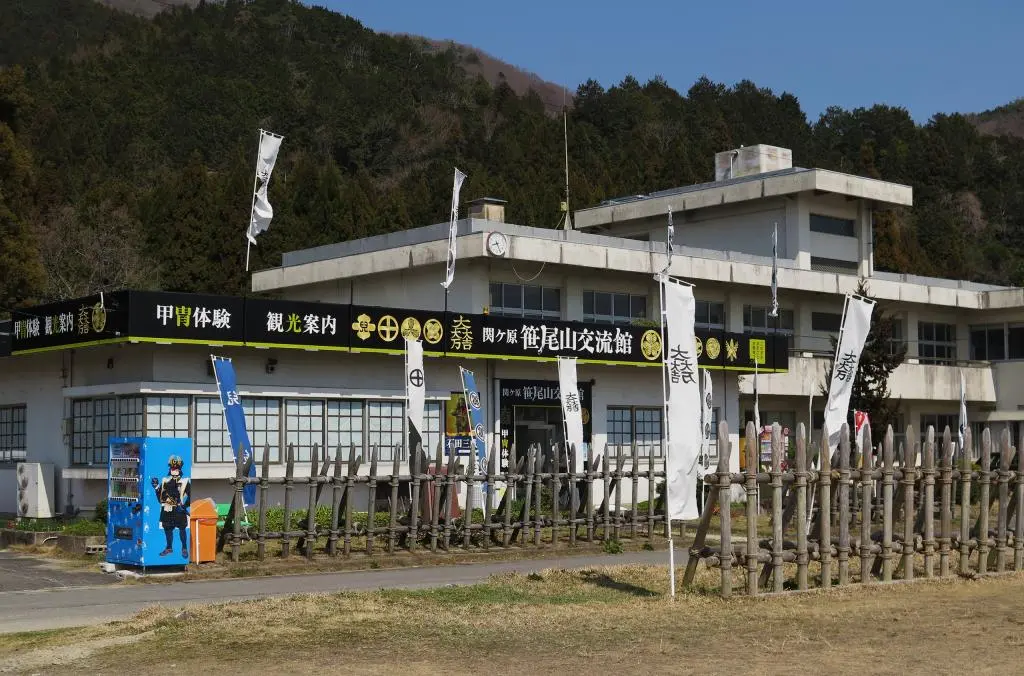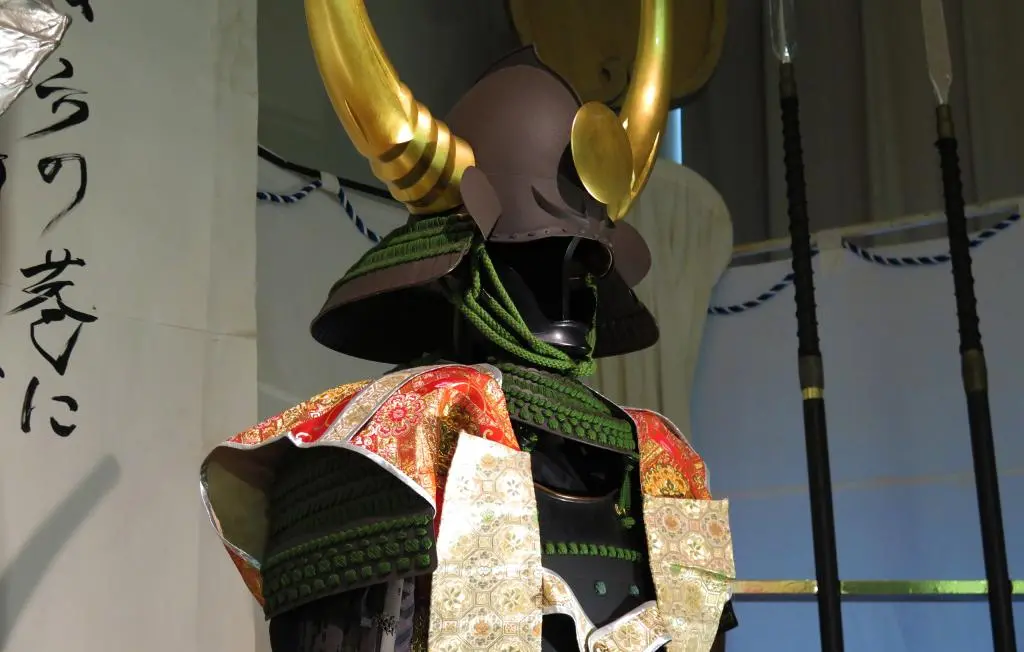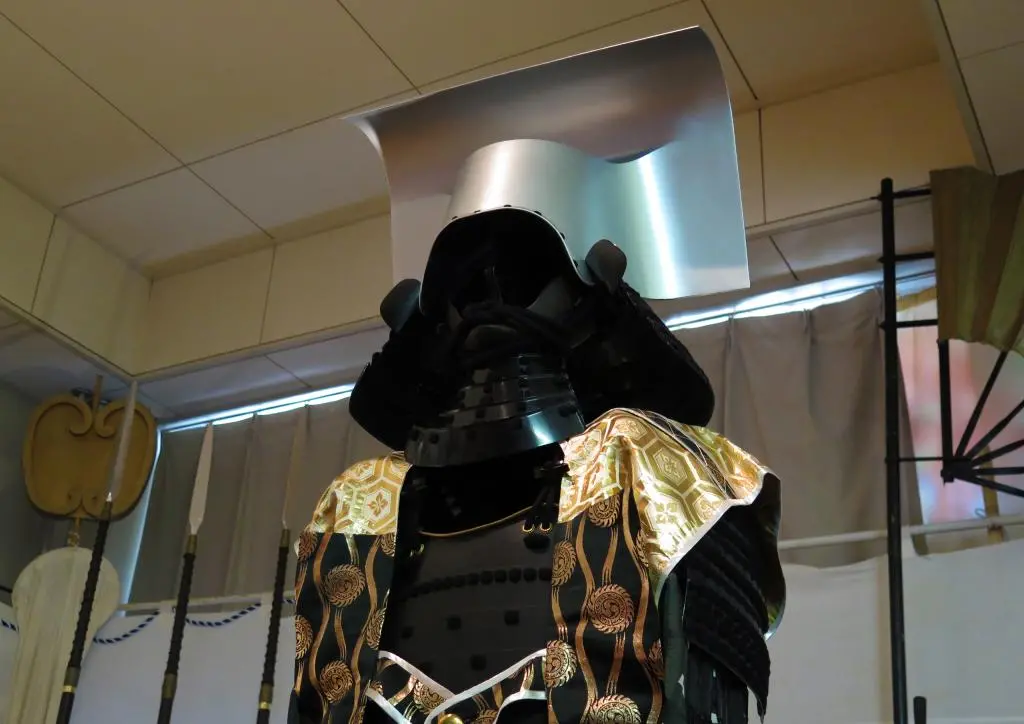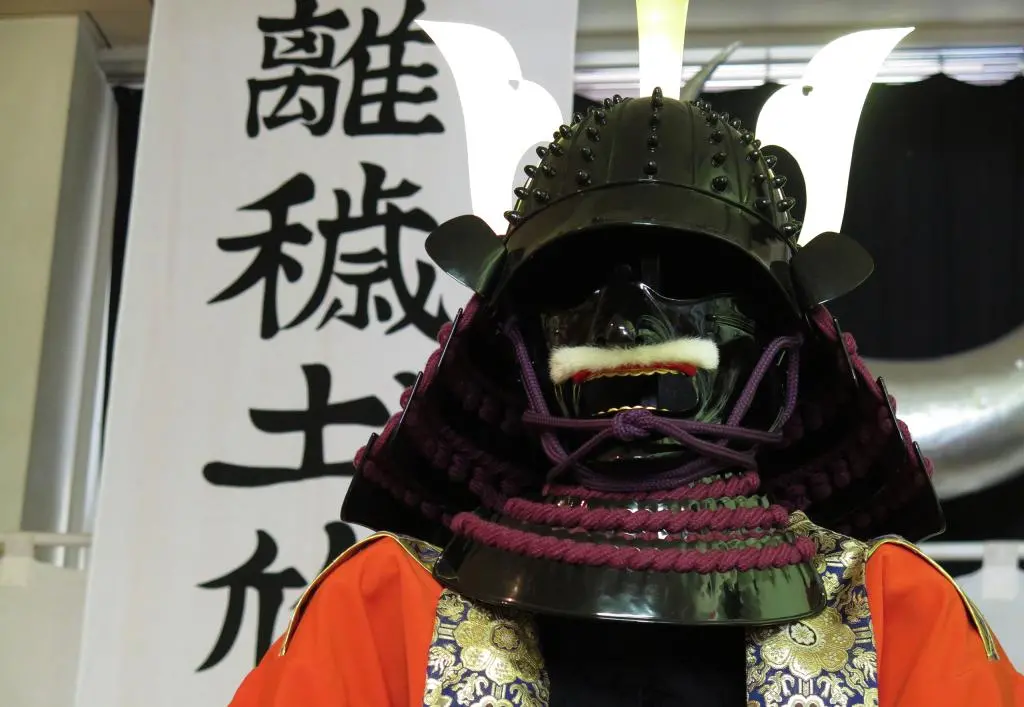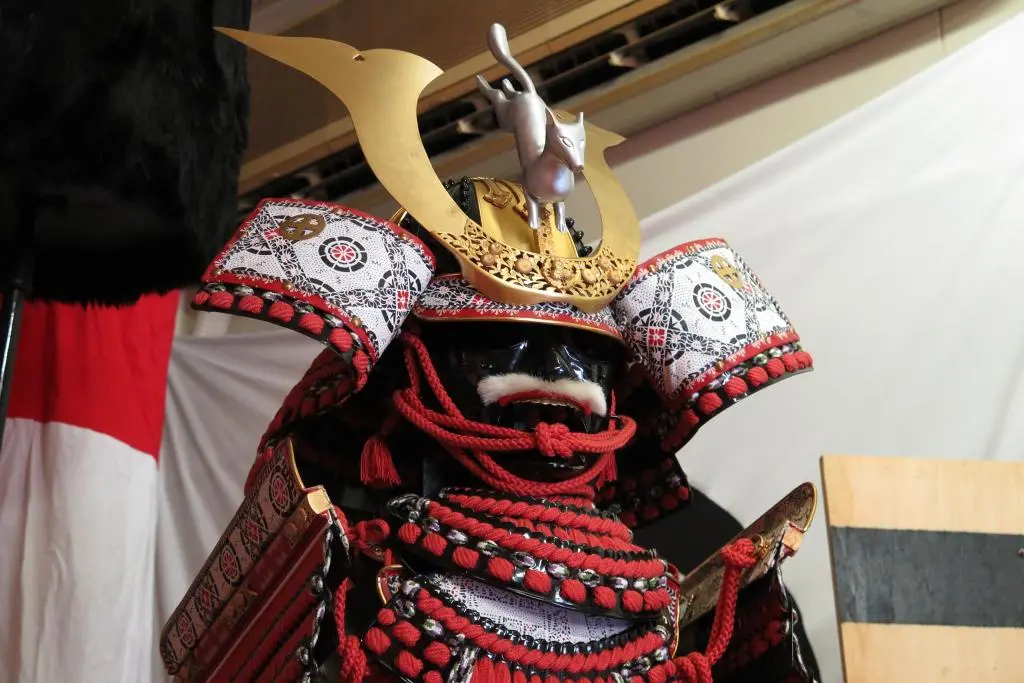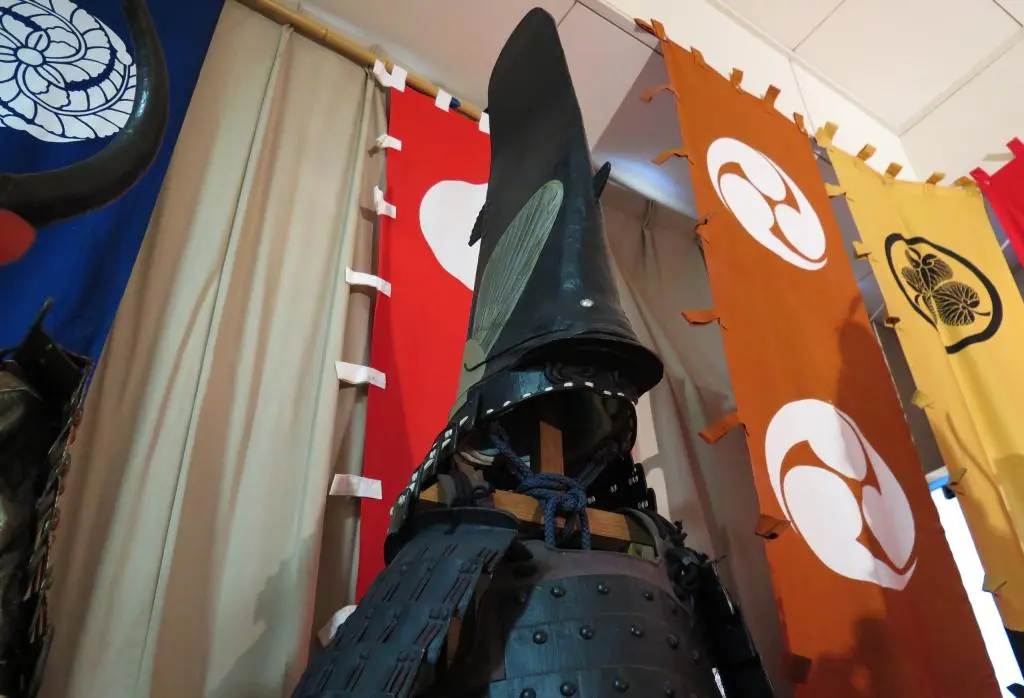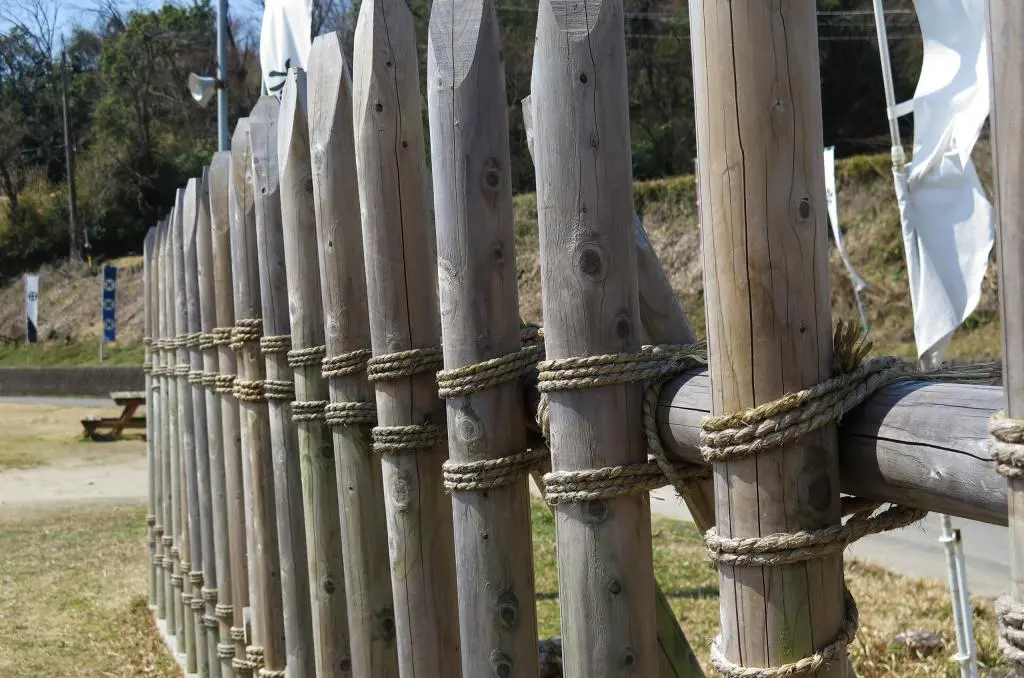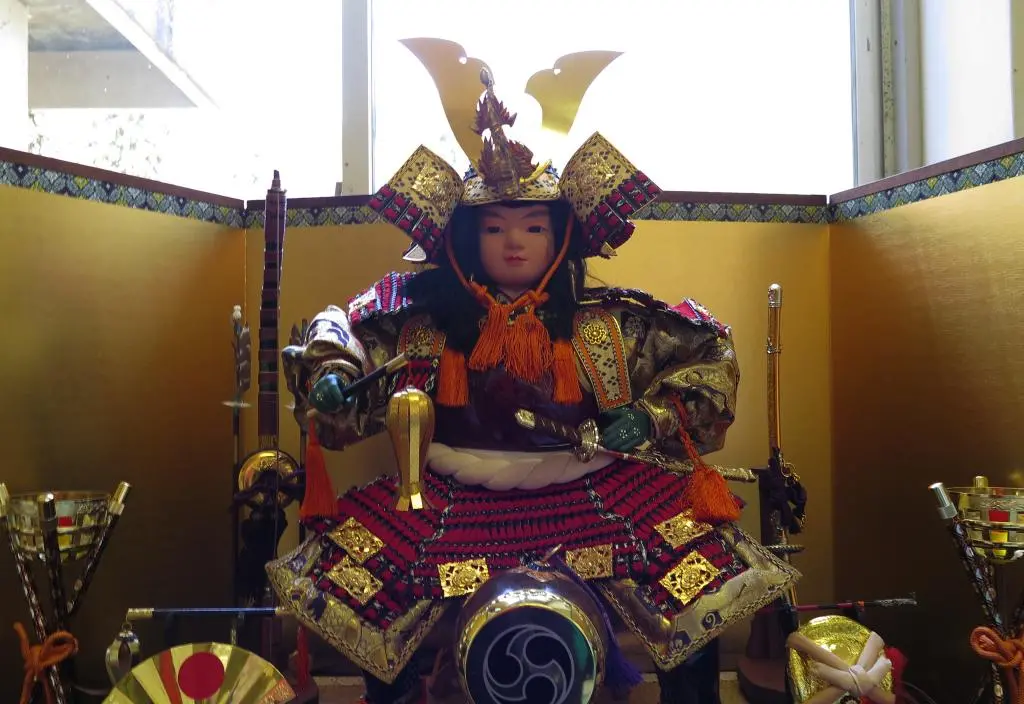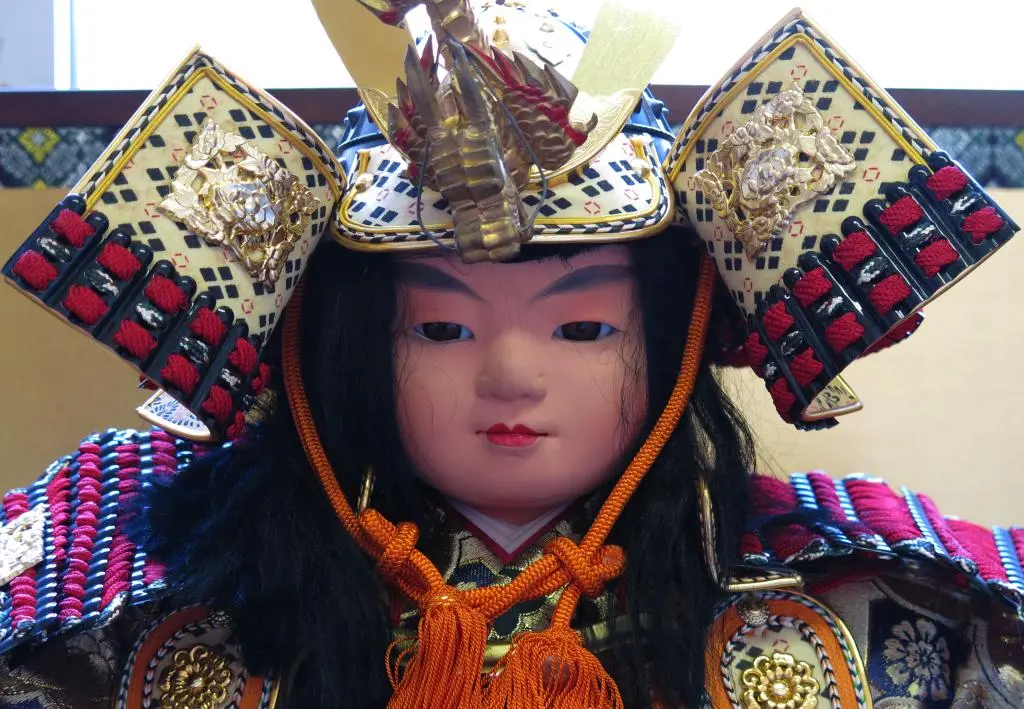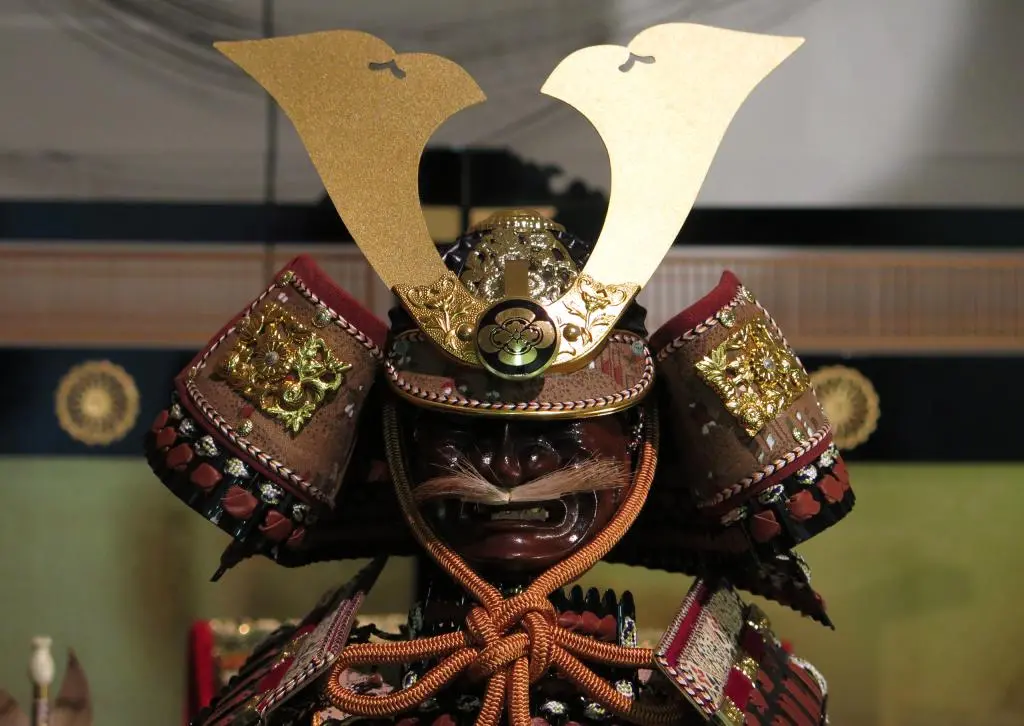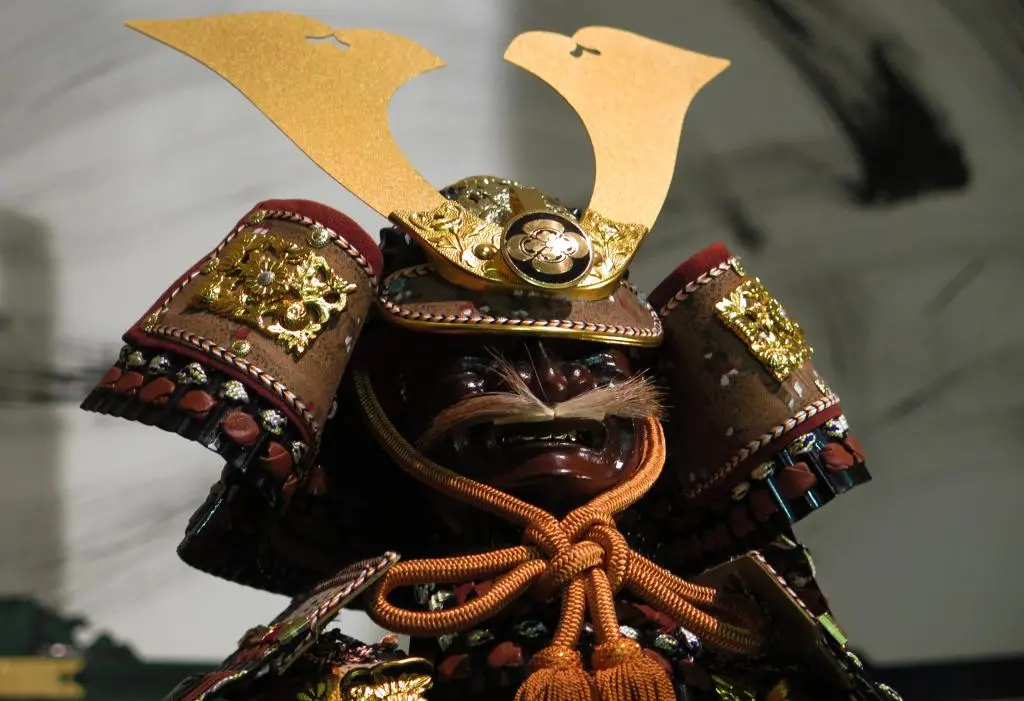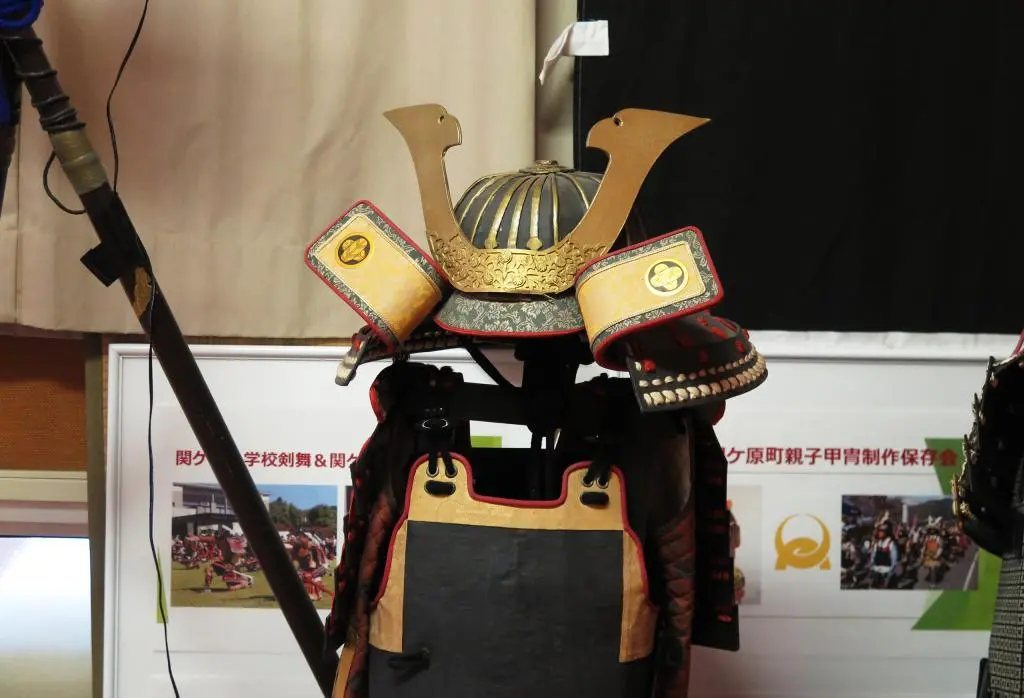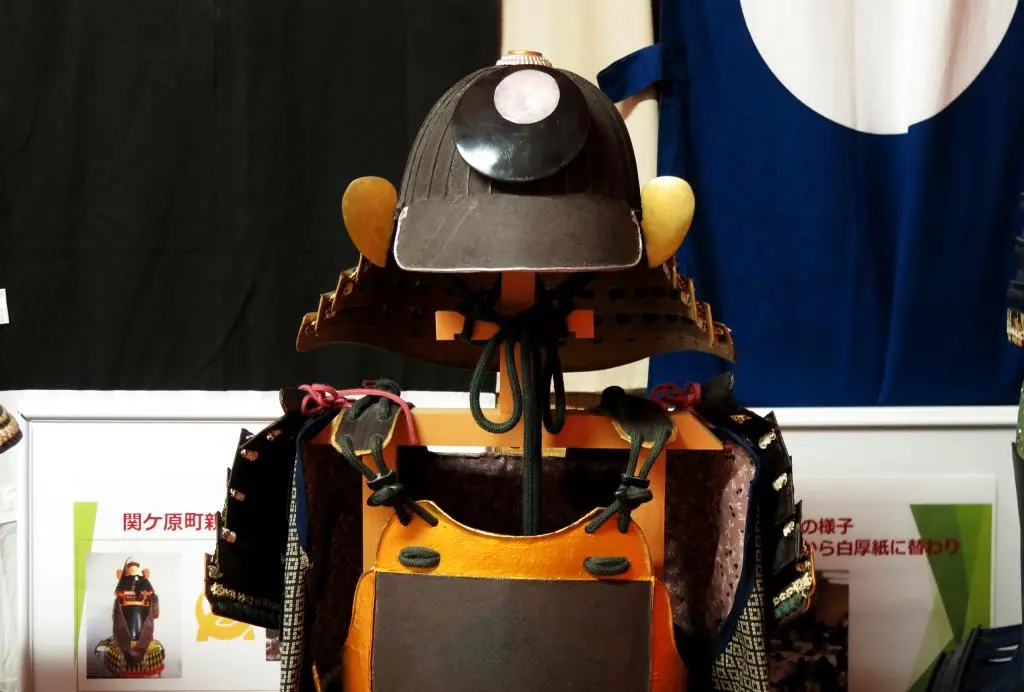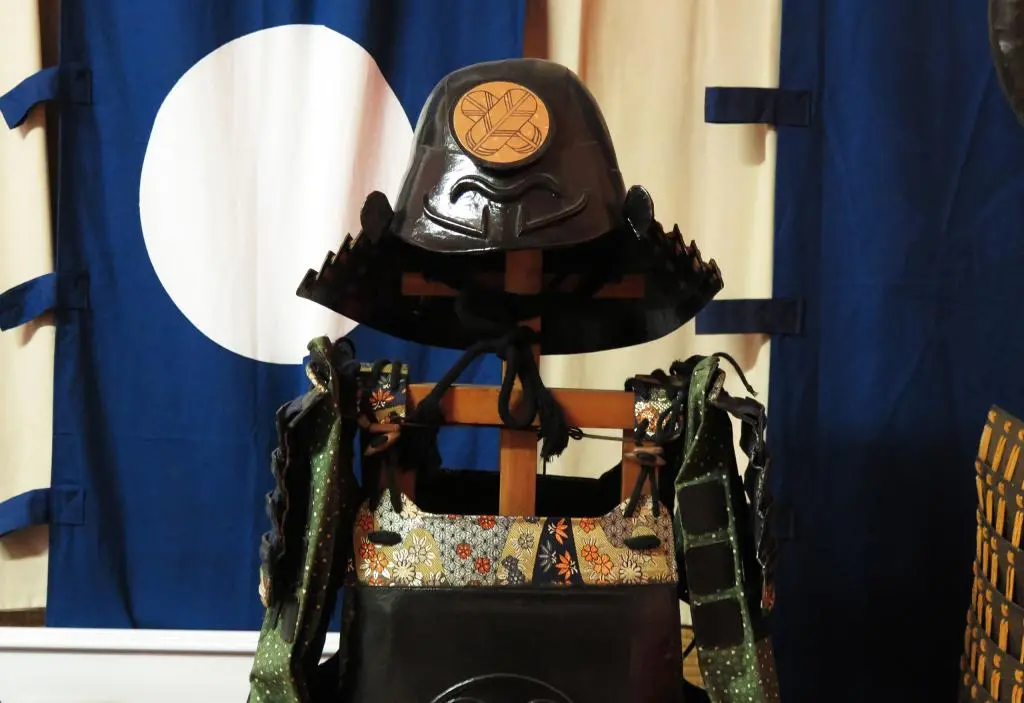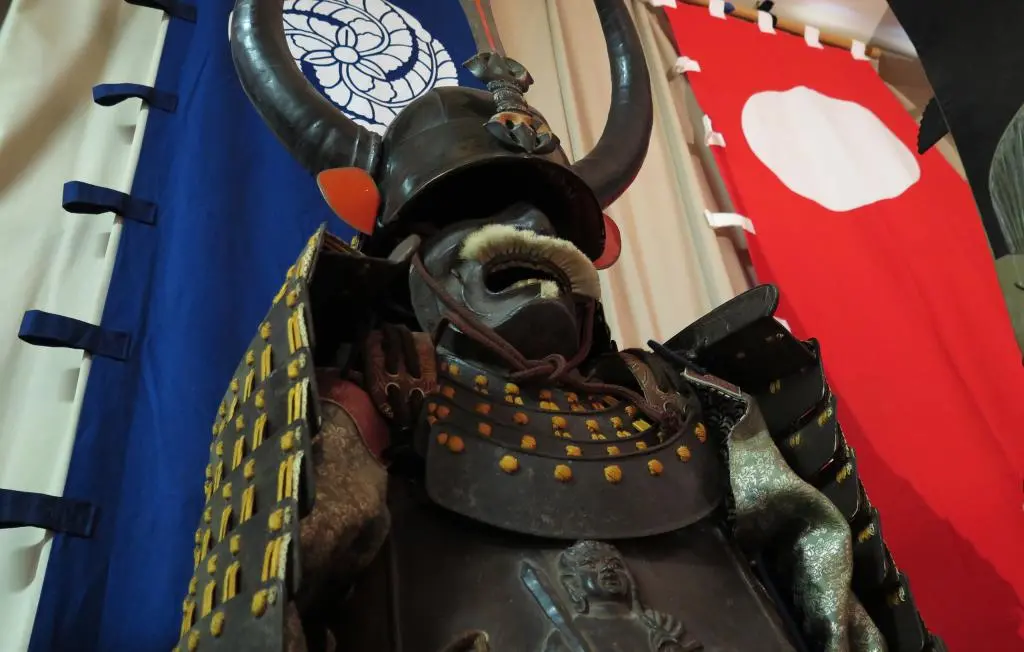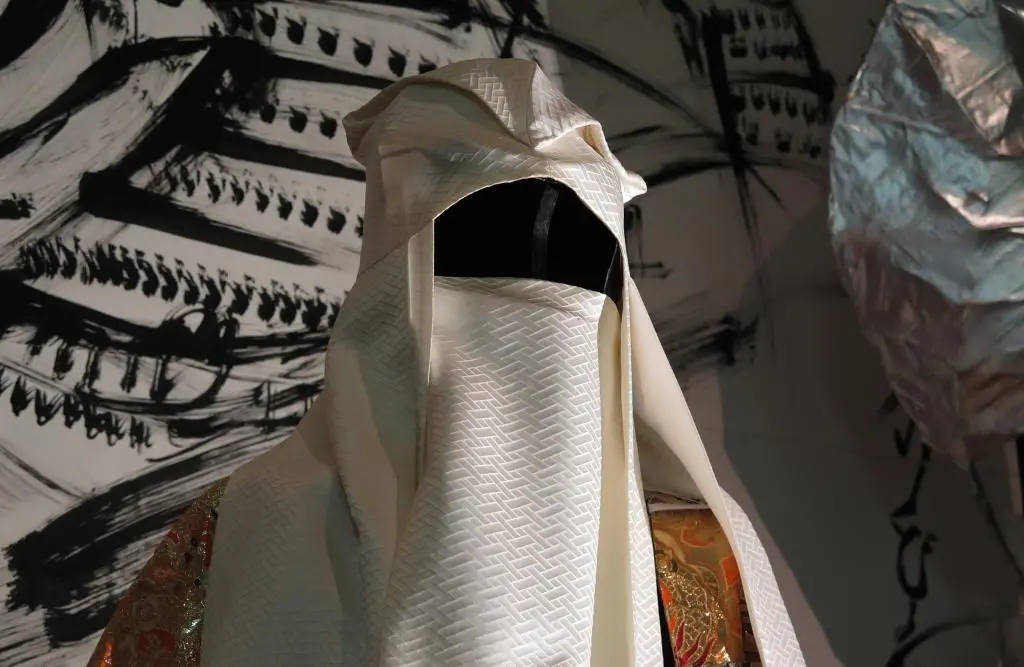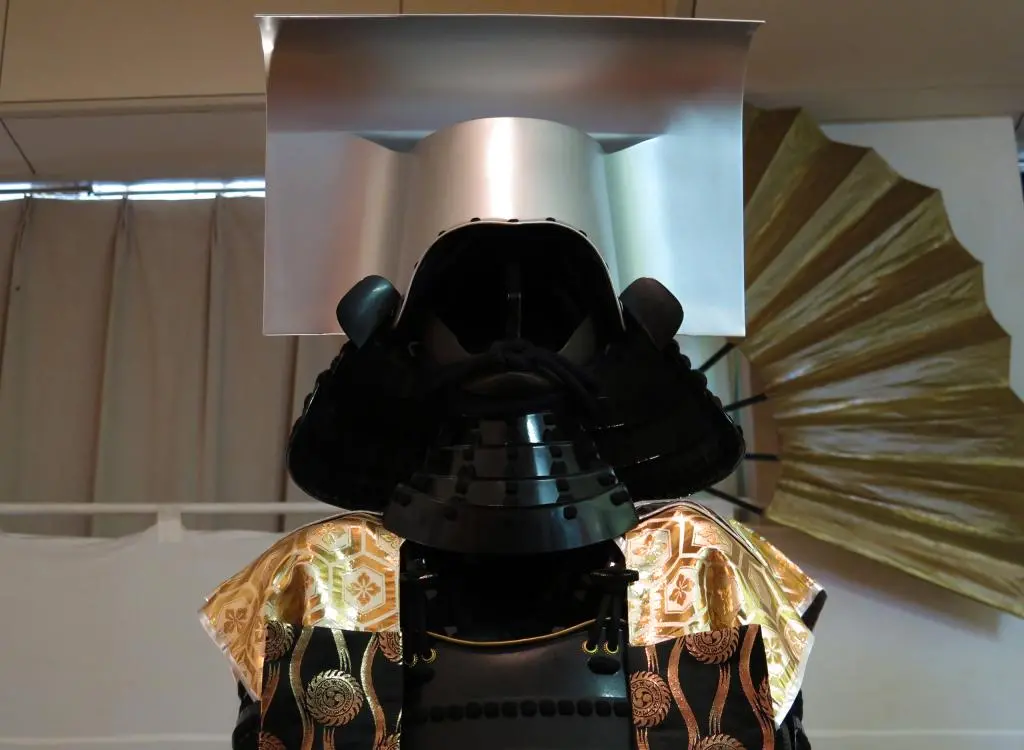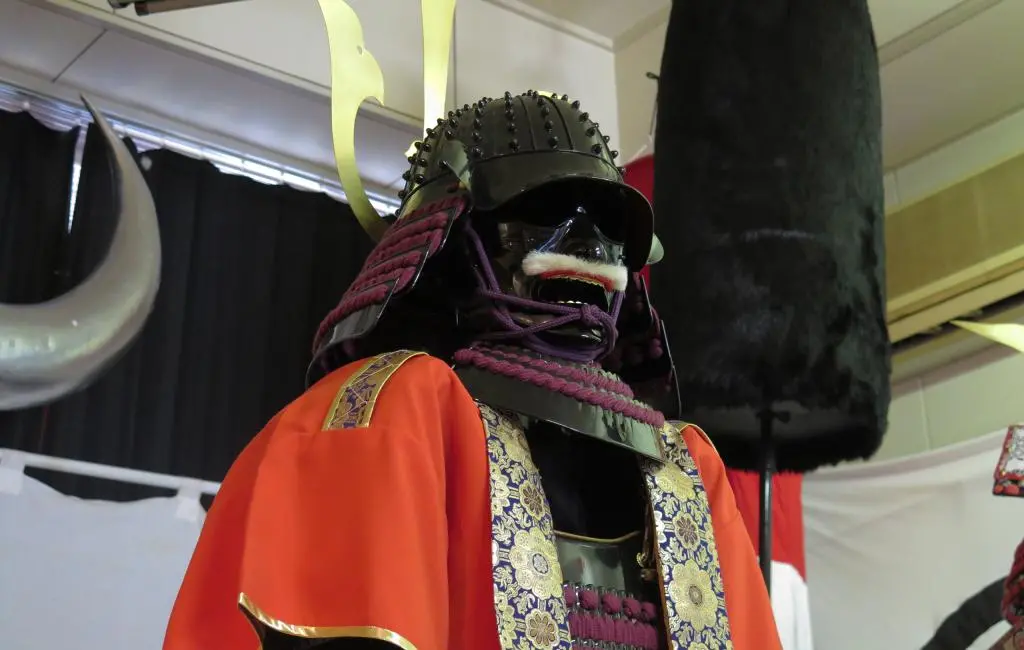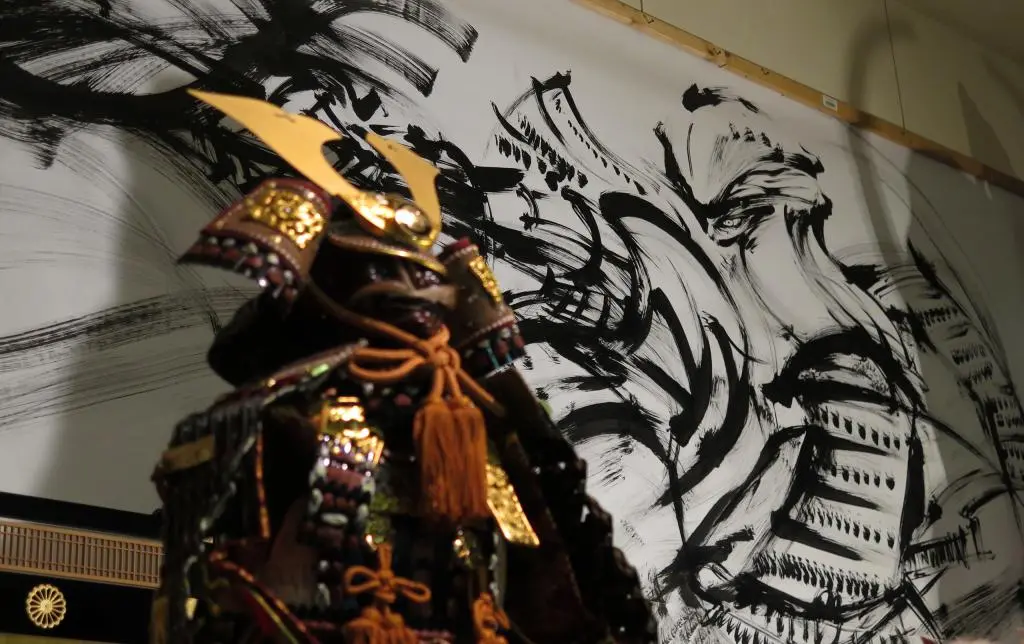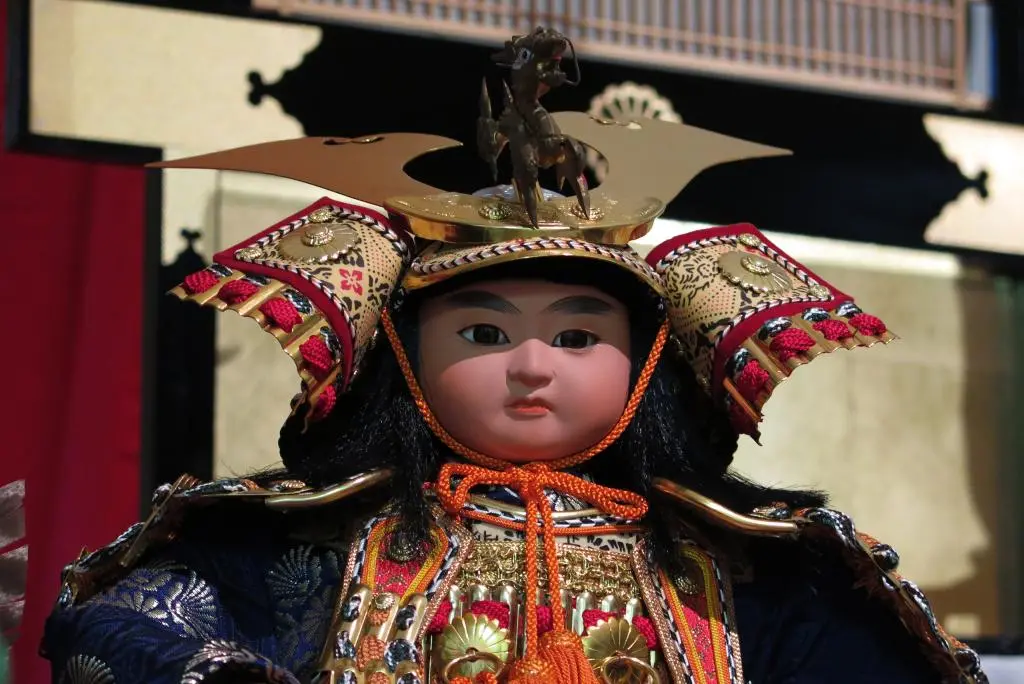At the base of Sasaoyama in Sekigahara is the Sasaoyama Exchange Center 笹尾山交流館 as part of the overall Sekigahara Sight Seeing Information Center 関ケ原観光協会. The Information Center is basically a government building where tourism for the town is run, but the Exchange Center is open for visitors.
The Exchange Center has lots of flyers for places around town, and costume rental. You can pay to wear some goofy samurai armor for 20 or 30 minutes, walk around the area, and pose for photos. Much of this armor is pretty generic, with various clan emblems on them.
In the back of the Exchange Center, they had some premium costumes and authetic armor on display. Some of the armor was used in ceremonies and festivals in Sekigahara. The more authetic-looking armor were used in reenactments of the Battle.
The above armor is a costume of what was worn by Otani Yoshitsugu 大谷吉継, one of the close friends of Ishida Mitsunari, leader of the Western Army. The armor is very distinct as it has no helmet. The cloth was used to cover his disfigured face.
Otani's forces were positioned in the western forest. At the time of the battle, he was inflicted with severe illness and could barely see in front of him. He committed seppuku after Kobayakawa betrayed the Western Army and attacked them as a member of the Eastern Army.
The above costume armor was worn by Fukushima Masanori 福島正則. The bull horns are the most distinct feature of his armor.
He was one of the most seasoned battle commanders in the Eastern Army and led the front line against the Western Army. He was given personal permission to have the first strike against the Western Army, but Ii Naomasa and Matsudaira Tadayoshi took that away from him when their gunman fired. With their shots, Fukushima aggressively charged Ukita's army signifying the full start of the battle.
Kuroda Nagamasa 黒田長政 wore armor similar to this costume. Big 'ol square head.
Kuroda was Tokugawa's chief military strategist and perhaps the most cunning strategist in all of Japan. His army was stationed on Okayama, north east of the main battlefield and covered Ishida's flank, forcing him into the center of the fight. He also conspired with Kobayakawa to turn him against Ishida, ultimately allowing Tokugawa to win the battle.
The next costume armor is of Kobayakawa Hideaki 小早川秀秋. The red robe and trident ornament on the helmet are the most distinguishing features.
Kobayakawa was only 19 year old at the time of the battle. His army was the second most numerous in the Western Army, consisting of 15,000 troops. His troops stayed at Matsuoyama and did not engage in the battle until he finally made the decision to betray Ishida and attack Otani of the Western Army. As mentioned above, Otani committed seppuku as a result, and the rest of the Western Army quickly fell.
Because of his role in the battle, Tokugawa increased Kobayakawa's standing by giving him all castles and lands previously owned by Ukita, which included Okayama castle and vast territories in Bizen. Although, at 21 years old, he drank himself to death. He had no heir, so Kobayakawa was officially dissolved.
Lastly, we have a costume simliar to the armor of Shimadzu Yoshihiro 島津義弘. The leaping fox ornament of the helmet is its most distinguishing feature.
He and his nephew were members of the Western Army. After the battle had been lost, they refused to retreat by showing their backs to the enemy. So with the little manpower they had left, they charged through the center of the battlefield completely surprising Tokugawa and the eastern armies. They broke through the line and continued charging south to make their retreat. His nephew was killed in the assault, but Yoshihiro made it through.
Besides the fancy replica armor, they had a few sets of armor that had been weathered to look more realistic. The above armor was made after armor belonging to Katou Kiyomasa 加藤 清正, distinctive because its one meter high helmet.
Katou was a member of the Eastern Army, but was not in the Battle of Sekigahara. He was battling and defeating Ishida's allies in Kyushu at the same time.
Along with Katou's armor were a few more pieces. I could not identify the middle armor, but armor on the left is of the Monnashi clan. The Monnashi clan was a military branch of what was left of the Fujiwara clan. The Fujiwara clan came to power around the 800s, but there doesn't seem to be a lot of information about it at the time of the Battle. There was no Monnashi army, and I think this was just a commander in the Tokugawa army.
There were a few other pieces there too, used by actors in the reenactment.
Overall, it was a fun surprise to see some of these after visiting the Sekigahara Battle Museum and Sengoku Armor museum. Even though these were costumes, all of the armor in the battle was pretty distinct, so you can usually identify it easily from its main characteristics.
